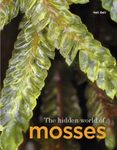"In this voluminous work a detailed treatment of 168 species of epiphyllous liverworts occurring in China is presented. Papers dealing with this group of plants worldwide are mentioned followed by a short history of bryological studies in China.
The characteristics of epiphyllous liverworts and their adaptations to the phyllosphere are briefly explained and partially illustrated. Zhu and So recognize that "epiphyllous liverworts are certainly not a natural group", and discuss the interpretation of this category of plants by different authors. They accept three types of epiphyllous liverworts: "obligate", "facultative, common" and "occasional". The relationship between these liverworts and hosts' leaves is analyzed, and it was observed that they prefer evergreen, thick, hard and smooth leaves in Chinese subtropical forests. With respect to phytogeography, nine distribution patterns are recognized. The largest group of epiphyllous taxa belong to the East Asian type, with species found principally in China, Japan and Korea. In China, the provinces with the highest species number of epiphyllous liverworts are Yunnan, Hainan and Taiwan; and they are highly frequent in the cloud-zone forests between 800-1500 m. The conservation of epiphyllous liverworts depends greatly on strict protection of corresponding forests. Seventeen taxa are recommended as candidates for protection. In China, the main threats towards epiphyllous liverworts are deforestation, ill-planned public construction works, and inappropriate conservation practices.
The taxonomic treatment of the species, more than 340 pages including 129 plates, is the principal part of this work. The epiphyllous liverworts of China belong to 28 genera distributed in 10 families; 9 families with one genus and one or few species each and the Lejeuneaceae with 19 genera and 138 species. The genera with more than five species of epiphyllous taxa are Cololejeunea (63 species), Lejeunea (17), Drepanolejeunea (15), Cheilolejeunea (10), Leptolejeunea (7) and Colura (7). A key to the epiphyllous families, and then, within each family keys to the genera, subgenera and/or species are presented. For each genus the diagnostic features are enumerated and its worldwide distribution mentioned. Each species is then treated with data on the type, synonyms, mostly with complete description, discussion on its variation, representative specimens examined, habitat and range. More than 75% of the species are accompanied by informative and detailed illustrations. About 6000 specimens were examined in the present study, half of them collected by the first author himself. Two new species (Cololejeunea yipii R.L. Zhu and Lejeunea hui R.L. Zhu), a new variety, synonyms, lectotypifications, a new combination and a new name are proposed. Eight species are newly reported for China. Lists with doubtful!, excluded and not available taxa complete this part of the work.
An extensive literature list, a glossary with references to figures and a complete index of scientific names concludes this treatment. This valuable book will be a very usefull tool for floristic, systematic and ecological work on hepatics in China and is recomended to everybody dealing with hepatics' principally Lejeuneaceae, not only in Asia."
– M. Elena Reiner-Drehwald, Nova Hedwigia vol. 73, no. 1-2, 2001, p. 269/270
"This is a very well written and fully illustrated flora of epiphyllous liverworts found in China. A total of 168 epiphyllous species belonging to 28 genera in 10 families are recognized, described, and illustrated. Of these, 43 species are obligate epiphyllous liverworts, with the rest either as accidental or facultative epiphyllous taxa. For each species, the distribution inside China and their worldwide range are enumerated. Dichotomous keys to the families, genera and species are presented. Two new species and one new variety, and full synonymy for each taxon, of which 10 are new synonyms, are proposed. The volume also contains several nomenclatural changes and new lectotypifications. A glossary and index to scientific names help a great deal in understanding the technical terms and in accessing the rich information provided by this well-done revision.
Undoubtedly, the presence of epiphyllous liverworts forms one interesling and unique visual phenomenon of the wet tropical rain forest. Biologically speaking, this group of tiny plants and their adaptations to grow on the wet surface of leaves of numerous plants has been a challenging area of investigation for more than a century. Although many of the species of hepatic epiphyllae are not a natural group from the phylogenetic point of view, nevertheless, their repeated occurrence across the wide tropical rainforest belt represent a remarkable convergent pattern of evolution. As such, the reader is recommended to be educated first on this topic by reading carefully the introductory discussion of the morphological characteristics of epiphyllous liverworts and their adaptations to the phyllosphere, as well as the summary of the ecology and distribution of epiphyllous liverworts, found on pages 9-30, before attempting to use the volume for any taxonomic identification.
Although the epiphyllous liverwort flora described in this volume is based on the Chinese materials, more than a hundred of the species recognized are, however, widespread in E and SE Asia. As such, the flora is an up-to-date reference and useful guide to the study of epiphyllous liverworts in Malesia, including Singapore.
In using the volume to key out some of my epiphyllous liverworts collected from Nee Soon Swamp in Singapore, I have found the species description too lengthy and the many measurements of leaf sizes and leaf cells too detailed to be of great help to the reader who often needs to decide on a species determination under time pressure. In the end, I have resorted many times to base my conclusion about the species identity on the short paragraphs of taxonomic synopsis and the diagnostic comments that are concisely and sufficiently written for each taxon. Having said this, the excellent and accurately executed line drawings of the species are very useful in illustrating the species concept, especially for beginners.
My other enquiry pertains to the five centres of occurrence of epiphyllous liverworts in China, presumably, these are the local areas with high species number and diversity of epiphyllous liverworts. They are identified as (1) Hainan, (2) Taiwan, (3) southwestern Zhejiang and northern Fujian, (4) southern Yunnan, and (5) northwestern Yunnan and southeastern Xizang. An oversight in this part of the discussion lies in the failure of the authors to indicate the exact number of epiphyllous taxa reported from each of the five centres. Instead, the richness of the taxa for the five centres is represented in the map (Fig. 10) by the proportional length of bars. It becomes difficult to estimate, by visual judgment of the comparative length of the five bars, the differences in the number of taxa, say between Centre 1 & 2 or Centre 2 & 3. Additionally, my own limited experience with the study of tropical mosses in China has called my attention to the richness of tropical bryophytes in Guangdong Province. Does the omission of a Guangdong Centre represent a reality or an artifact of undercollecting of epiphyllous liverworts in this province?
In collaboration with outsiders, rcsidcnt Chinesc plant taxonon~ists havc in recent years published many excellent floristic revisions and modern systematic monographs that have shown the world the great diversity and richness of their indigenous flora. This volume adds more evidence to this fact by revealing convincingly the little known and yet vcry diverse world of epiphyllous liverworts that exists in the wet tropical forests in China. Workers in E and SE Asia can only thank the two authors for rendering a great service in producing such a magnificent piece of summary work bascd on their many years of hard work in the ficld and careful observation of minute taxonomic characters under the microscope for each of the species described. A copy of this supplement volume of the journal Nova Hedwigia is a must for libraries specializing on tropical botanical literature."
– Benito C. Tan, Gardens' Bulletin Singapore 57, (2005), p. 143-144














































